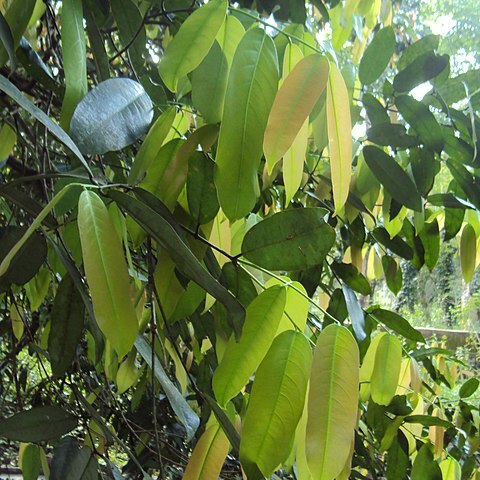Small to tall (in Mal.) evergreen trees. Buttresses sometimes present and up to 8 m high. Branchlets mostly dark, terete (except L. sessilifolium) and mostly flattened at the nodes. Leaves decussate, or opposite, sometimes subopposite (occasionally a few leaves spiral on the upper part of a branchlet), distinctly sometimes very shortly petioled, rarely ± sessile, blade rarely subpeltate; margin entire, sometimes cartilaginous. Stipules a tuft of hair-like processes, caducous. Thyrses axillary, 1 (—2—3), sometimes branched from the very base, divaricate. Peduncle distinct sometimes very short or ± absent. Bracts deltoid or lanceolate, usually short-ciliate or-fimbriate. Pedicels distinct, usually articulated at the base. Flowers bisexual, 5-merous (except the ovary). Calyx dish-shaped, lobes rounded or triangular, usually spreading, sometimes inflexed or reflexed. Petals imbricate, inner surface usually partly covered with cristate, lamellate, or fimbriate appendages, rarely bearing a tuft of fleshy papillae at the central part (L. beccarianum), or naked. Disk usually fleshy and ± flat, in bud usually slightly concave, sometimes thin and patelliform, upper surface smooth, or denticulate, sometimes covered with fleshy, subulate processes (extra-Mal. spp.), rarely only at the base of filaments (L. pallidum), 5-angular, ± rounded, or distinctly 5-lobed and the angles or lobes episepalous, or epipetalous. Stamens inserted on the disk, usually between pistil and edge, sometimes quite near the margin, rarely each of them in a small pit (L. pallidum); filaments filiform, dorso-centrally fixed; anthers usually broad-ovoid or-ellipsoid, versatile, ± introrse, apex obtuse or short-apiculate, free at the lower 1/3 or 1/2. Ovary usually partly immersed in the disk, trigonal or pyramidal, gradually narrowed into a cylindric, short style, 3-celled; stigma obscure. Ovules 4-18 in each cell, arranged in two series. Capsule oblong, or slightly ± spindle-shaped, 3-lobed,-winged, or-angular, loculicidally dehiscing. Seeds oblong, flat, attached in the middle, the wing surrounding the seed; albumen absent, or scanty.
More
Bisexual trees. Leaves opposite or subopposite, decussate, entire; stipules a tuft of hair-like processes, caducous. Flowers in axillary thyrses. Perianth 5-merous. Petals imbricate, usually appendaged inside. Disc usually fleshy, nearly flat. Stamens inserted on disc; anthers dorsifixed, versatile, ±introrse. Ovary partly immersed in disc, 3-locular with 4-18 ovules per locule; style short; stigma inconspicuous. Fruit a capsule, ±fusiform, with 3 lobes, wings or angles. Seeds oblong, flat, winged, attached in middle. Endosperm scanty or absent.

